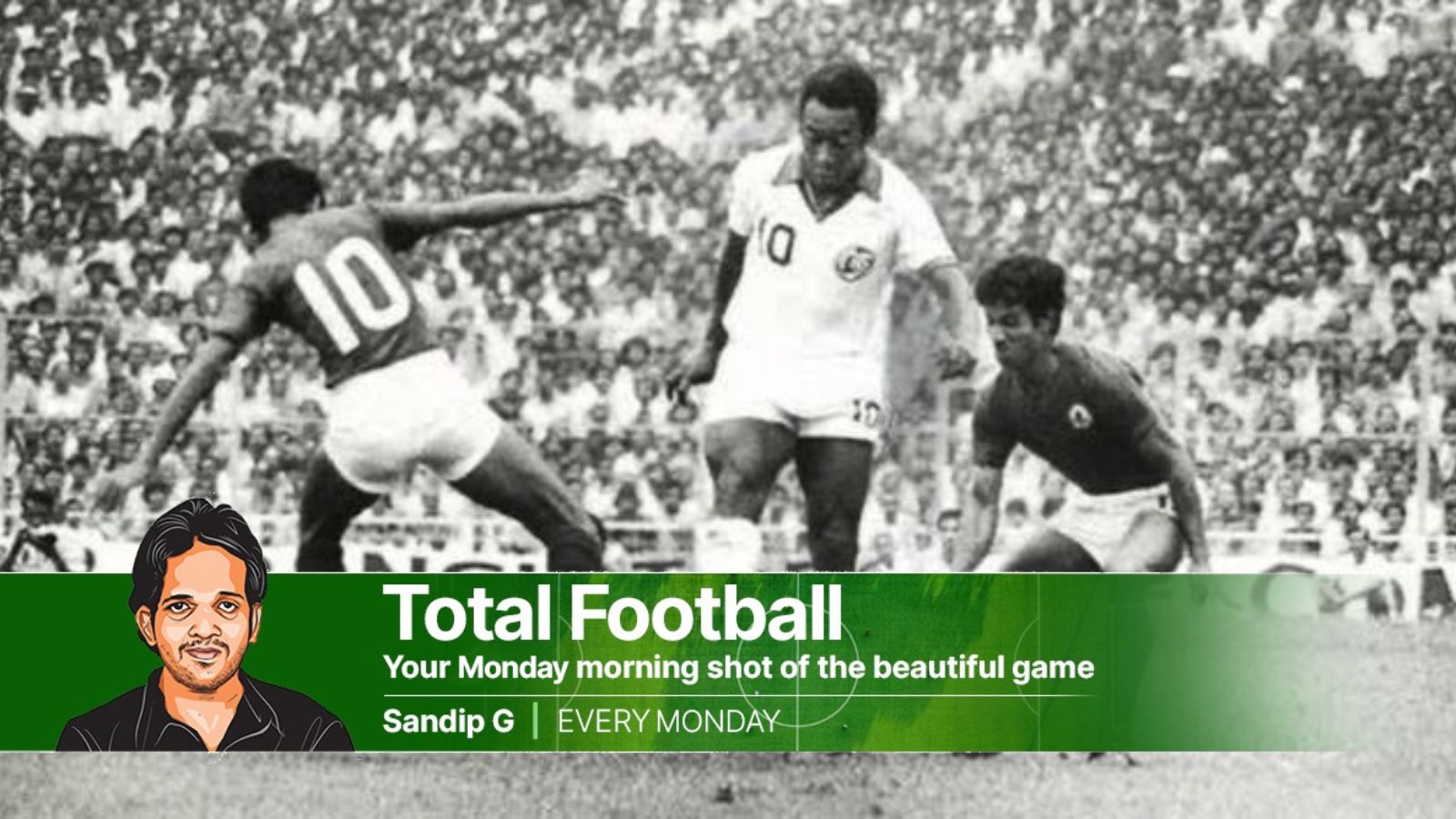The wait for his thousandth goal annoyed Pele. The journey from 989th to 1000 consumed only 24 days and six games, but the hype around the landmark, monikered milésimo, suffocated the man they call the King. “I had long wished the thousandth goal was over and done. I had a sudden cold feeling that I was doomed to go for years without scoring another goal,” he confessed some years later.
Every stadium he visited with his club Santos, a thousand balloons waited to soar as soon as he scored the goal; a lakh spectators waited breathlessly for the moment; Samba troupes were arranged to dance after the game; newspapers exhausted more newsprint on it than they did on the other global obsession of the decade – the Apollo 12 launch. Incidentally, the second batch of moonwalkers and Pele completed their mission on the same day, November 19, just six hours apart. He netted 279 more, wrapping his career with a staggering 1,279 goals in 1,363 games.
But whether his full haul merits entry in the records has long been debated and dissected. RSSSF, the most authoritative stats engine for football records, pegs his goals at 778 (another group of statisticians 1,091), 11th in a list helmed by German Erwin Helmchen.
FIFA statisticians have Cristiano Ronaldo at the top, and Pele at fifth (757). They discount those that the Brazilian scored during Santos’s European tours, now classified as friendlies, and youth and state competition matches. Besides, as the official highest goal-scorer Ronaldo jibed after his 900th goal, “all the goals that I scored, they have video”. Only a handful of Pele’s goals have footage.

Pele-academics though argue that the so-called friendlies were far from exhibition games and were fought intensely like professional games. They contend that Pele would have barely featured in youth games because he broke into the Santos first team when he was 15 and got his debut national cap at 17.
A case in point is one of the few games Pele’s Santos Invincibles lost, a 2-1 defeat at the hands of Olympiakos in 1961. So epochal a victory it was for the 46-time Greek league champions that it’s mentioned in their club anthem too. Fans frequently remind visiting Brazilian stars of the modern era during Champions League encounters of the fate they had served to their greatest predecessor.
In memoirs and tour diaries, some of Pele’s contemporaries have reflected on the seriousness of the fixtures. One of them, Pepe recounted: “Every game was massive because we were all representing our country as a whole. It was never easy to beat these big teams away from home because they always had 8-9 players from the national team. We beat them because we were quite good. It was not at all an exhibition game, as it is now being perceived.”
Changed landscape
There was a time when goals for club friendlies counted. But now that they are but a pre-season inevitability, they have lost their competitive badge. Goals and results, thus, are not recognised officially. Paradoxically, goals from international friendlies have official validation, when most of them are high-scoring exhibition games.
Equally disputed is whether goals scored in US and Middle-East leagues should be counted at all. If so, whether the friendly games Santos played in Europe and the highly competitive provincial games in Brazil were of inferior quality. The word competitiveness is unquantifiable and immeasurable, depending much on the eye of the beholder, his mood, agenda and sensibilities, and impression perhaps. It cannot be broken down into metrics.
Unlike cricket, which demarcated Test, first-class and friendly games since the 19th century, football was late into the classification business. The game was so vast and had no devoted time-keepers, like Wisden for cricket. It did not fuss about numbers like cricket did. And when it did, complexities popped up.
The path of convenience was embraced. Not only Pele, his compatriot Artur Friedenreich’s body of 1,329 goals and Austrian Franz Binder’s goal-chest of 1,006 goals were disregarded. Surprisingly, those of Helmchen (989+), Josef Bican (950+) and Ronald Rooke (934+), the top three, stood, even though they played in dodgy leagues and during the Second World War.
Bican, for instance, played in the Czechoslovak league in the 1940s before moving to the Nazi Germany-annexed Protectorate of Bohemia and Moravia, even though many clubs coveted his signature at his peak. All three could have probably scored more than their official numbers, hence the plus suffix.
So academically, Ronaldo could become the first footballer to scale the 1k peak. He turns 40 in five months, but his fitness could carry him through the Saudi league for the next two-three seasons. “If I don’t have any injuries, this for me is the most important [thing], I want that. For me, the best mark that I can have in football is to reach, first, 900 goals. After that, my challenge is to score 1,000 goals,” he said after his 900th strike against Croatia.
Whether the wait unsettles him as he walks closer to the magic figure or not, there would be no shortage of intrigue, drama, statistical duels and Pele conversations.




